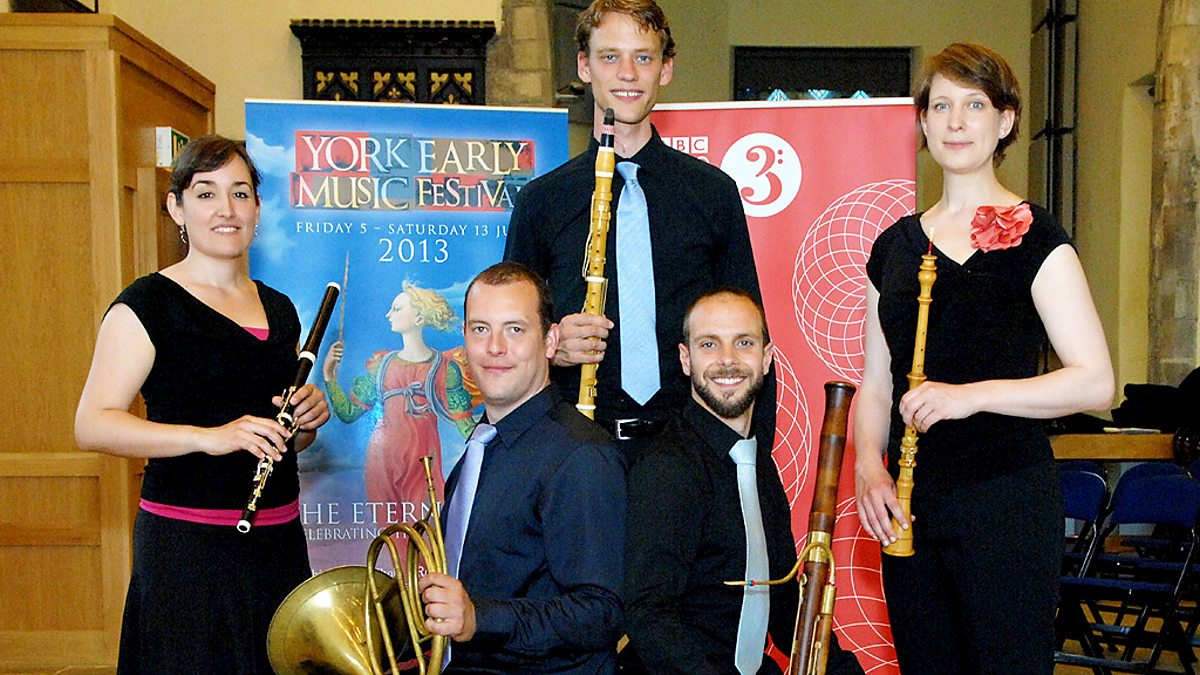Saturday
Josquin's motet - Praeter rerum seriem - proved to be very popular with younger composers of 16th century and in this programme Lucie Skeaping takes a look at how two of them - Cipriano de Rore and Roland de Lassus - paid a compliment to Josquin by using material from the motet in their own music. Nowadays song writers and composers "sample" music from elsewhere all the time but the idea is not a new one. "Parody" masses were very popular in the 16th century, sometimes being controversial in the choice of material if it was not sacred. De Rore's mass and a Magnificat by Lassus, along with the original Josquin motet, have been specially recorded for the Early Music Show by the BBC Singers conducted by Peter Phillips, who talks to Lucie Skeaping about why this music fascinates him.
There was a programme in which Peter Philips conducted BBC Singers. I don’t remember the result.
Sunday
Catherine Bott introduces highlights from this year's York Early Music International Young Artists' Competition which has proved an inspirational launchpad for early music performers across the world.
Past winners have included Florilegium; Paul Goodwin and Nicholas Parle; The Locke Consort; I Fagiolini; The Palladian Ensemble; Mhairi Lawson and Olga Tverskaya; Savadi; and Le Jardin Secret.
This year's competition drew on ensembles from America and Europe. Catherine offers a chance to hear from all ten finalists including the announcement of this year's winners
CD Review
sometime between 9.05 and 10.00
Jean Mouton: Missa Dictes moy toutes voz pensees (excs)
Tallis Scholars, Peter Phillips
[ed.] Please, Host, can you correct the title? It should be EMF.
Josquin's motet - Praeter rerum seriem - proved to be very popular with younger composers of 16th century and in this programme Lucie Skeaping takes a look at how two of them - Cipriano de Rore and Roland de Lassus - paid a compliment to Josquin by using material from the motet in their own music. Nowadays song writers and composers "sample" music from elsewhere all the time but the idea is not a new one. "Parody" masses were very popular in the 16th century, sometimes being controversial in the choice of material if it was not sacred. De Rore's mass and a Magnificat by Lassus, along with the original Josquin motet, have been specially recorded for the Early Music Show by the BBC Singers conducted by Peter Phillips, who talks to Lucie Skeaping about why this music fascinates him.
There was a programme in which Peter Philips conducted BBC Singers. I don’t remember the result.
Sunday
Catherine Bott introduces highlights from this year's York Early Music International Young Artists' Competition which has proved an inspirational launchpad for early music performers across the world.
Past winners have included Florilegium; Paul Goodwin and Nicholas Parle; The Locke Consort; I Fagiolini; The Palladian Ensemble; Mhairi Lawson and Olga Tverskaya; Savadi; and Le Jardin Secret.
This year's competition drew on ensembles from America and Europe. Catherine offers a chance to hear from all ten finalists including the announcement of this year's winners
CD Review
sometime between 9.05 and 10.00
Jean Mouton: Missa Dictes moy toutes voz pensees (excs)
Tallis Scholars, Peter Phillips
[ed.] Please, Host, can you correct the title? It should be EMF.



 .
. .
.
Comment